Over the past decade or so, British producer Max Cooper has emerged as one of our most innovative electronic musicians. Much like his peers Jon Hopkins or Floating Points, Cooper’s take on electronic music sits at the nexus point between the club, ambient and classical.
One element that makes Max Cooper’s particular strand of electronic music unique is his emphasis on the connection between visual and sonic artforms. Almost all of Cooper’s projects are linked to, or inspired by, corresponding visual works, which form the basis for his stunning multi-screen AV shows.
“Usually the way I work with visuals is that I’ll start with some kind of concept that has a visual counterpart, and then I commission someone to build the visuals,” he explains. “But sometimes people will come to me with a visual idea and say, do you want to make music for this? So in those cases I’m more acting like a traditional scoring musician.”
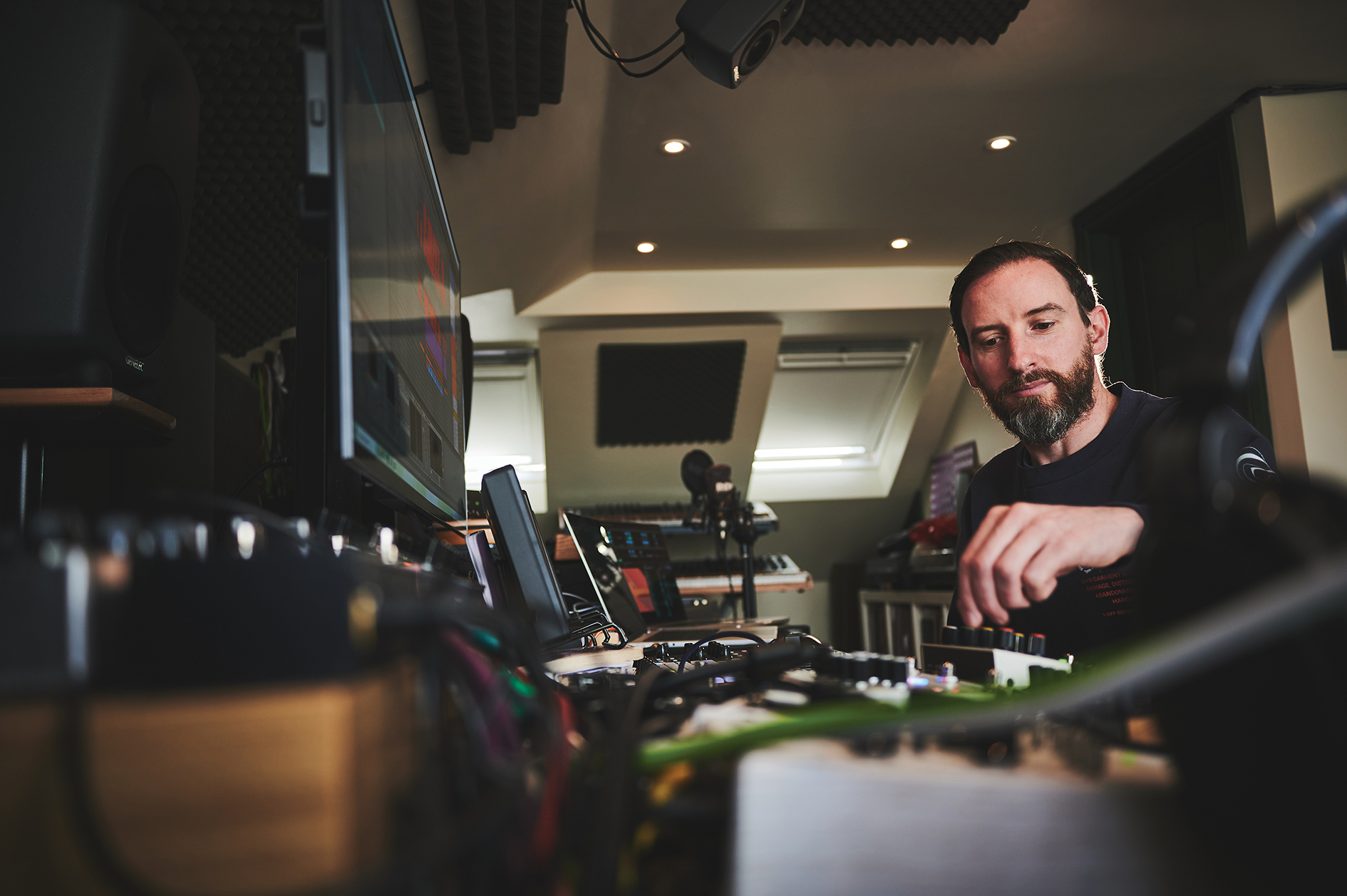
Musically, this visually-inspired concept tends to manifest in tracks that are at once beautifully simplistic – often built on simple rising chord progressions and ambient drones – but also crammed full of intricate, unpredictable detail.
“I love loads of detail in my tracks,” he tells us. “I’ll always do these tracks where I put in more layers than I should do and get to the point where you can’t really hear another layer. But then I might use a binaural panner or a spatial audio system, which means you can have all these layers in different positions.”
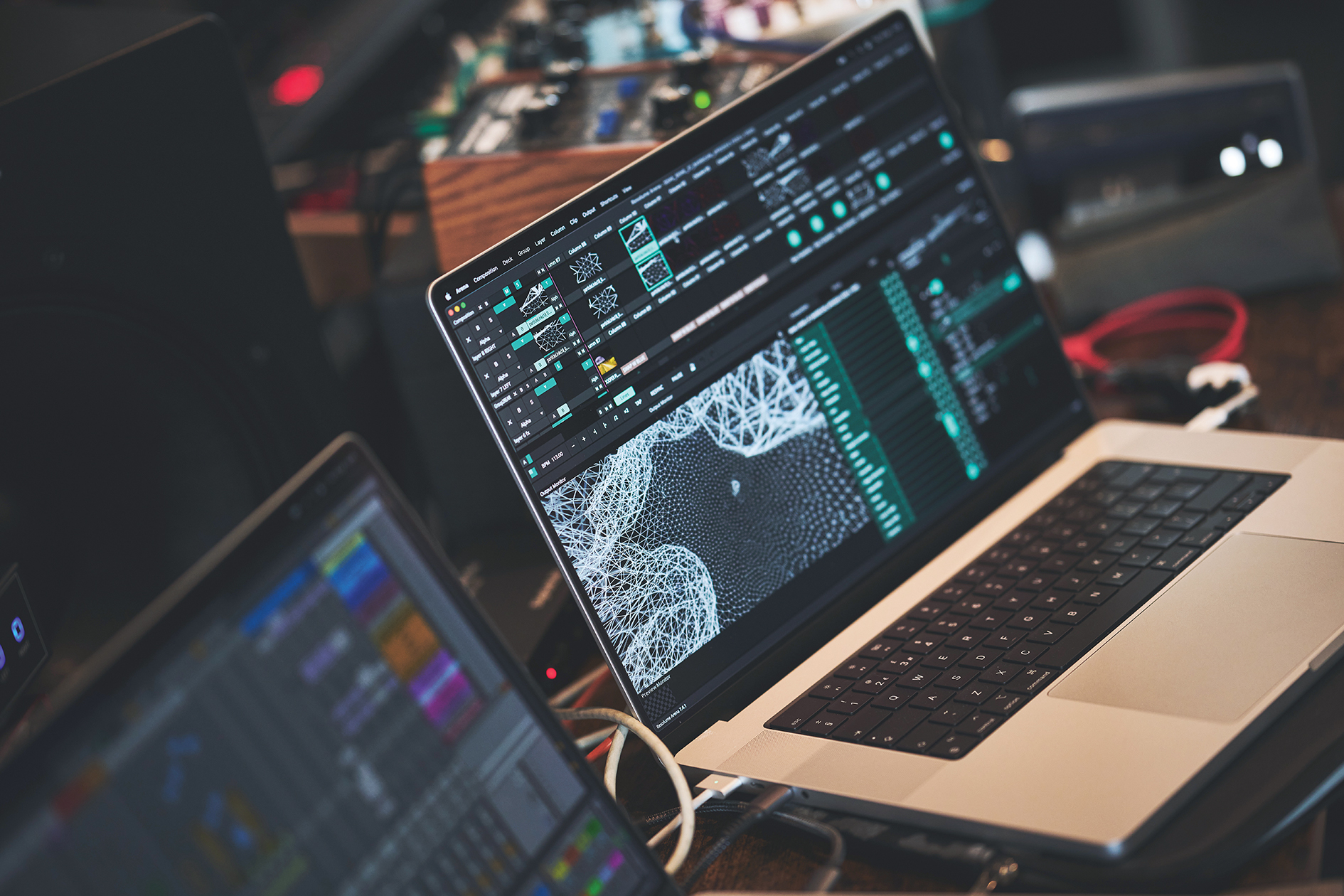
When we last spoke to Cooper in 2016, he was moving away from a fully in-the-box workflow towards incorporating more hardware instruments. On our return visit, we find that he’s fully embraced hardware creativity. For the most part, the bulk of Cooper’s recent tracks have been built out of jam sessions that involve running his enviable collection of hardware synths through a selection of creative effects pedals.
“I often think the way I work is more like a sculptor than a musician,” he tells us. “I’m basically chucking a load of stuff out and then I’ll start taking bits away. I’m sort of sculpting away all this stuff I don’t want. In the end, what you’re left with is this piece of music that sounds good.”
Having recently completed his latest project Seme – a classical collaboration performed at the Salzburg Easter Festival and London’s Barbican – and with a new album in the works, we visited Cooper in his studio for a tour of the synths and effects that fuel his sculptor-like workflow.
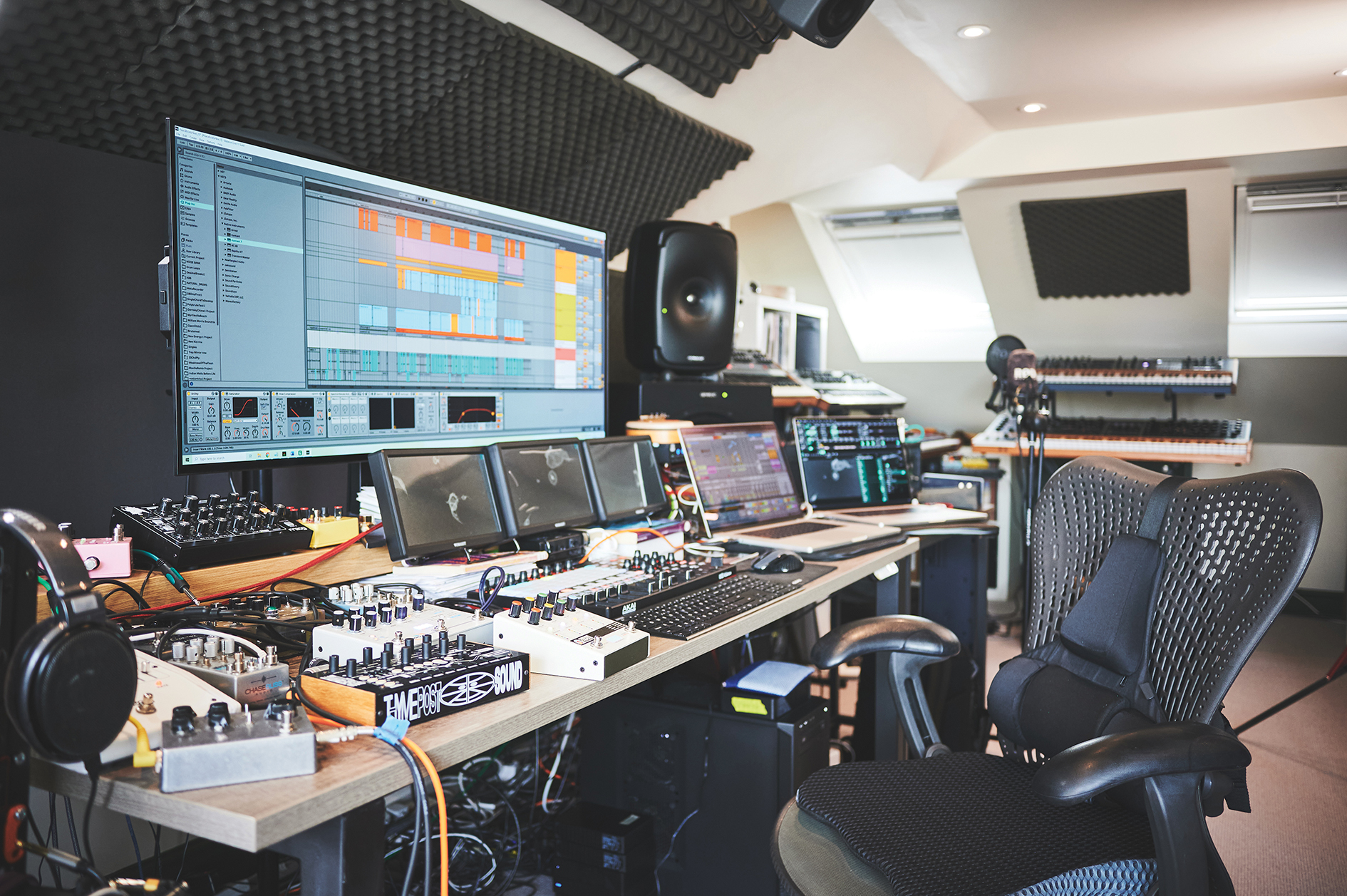
Tell us about the synths you’re using in the studio
“The Prophet-6 is my most used synth. It’s just got a nice balance of not trying to do too much, but doing enough to be flexible. The parameter space it covers is high proportion beautiful. Any synth, you’ve got a bunch of parameters with continuous values. If you’ve got 50 parameters, you’ve got a 50 dimensional space, basically. That contains all the sounds a synth can make, all the types of timbre.
“I think, for me, the Prophet-6 has got the largest proportion of beautiful parameter space. There are synths that can do just as beautiful things – and a lot more – but maybe there are parts of that parameter space that I don’t really like the sound of and I have to tune them more carefully. The Prophet-6 is just this lovely, crafted thing that has a lot of beauty in it.
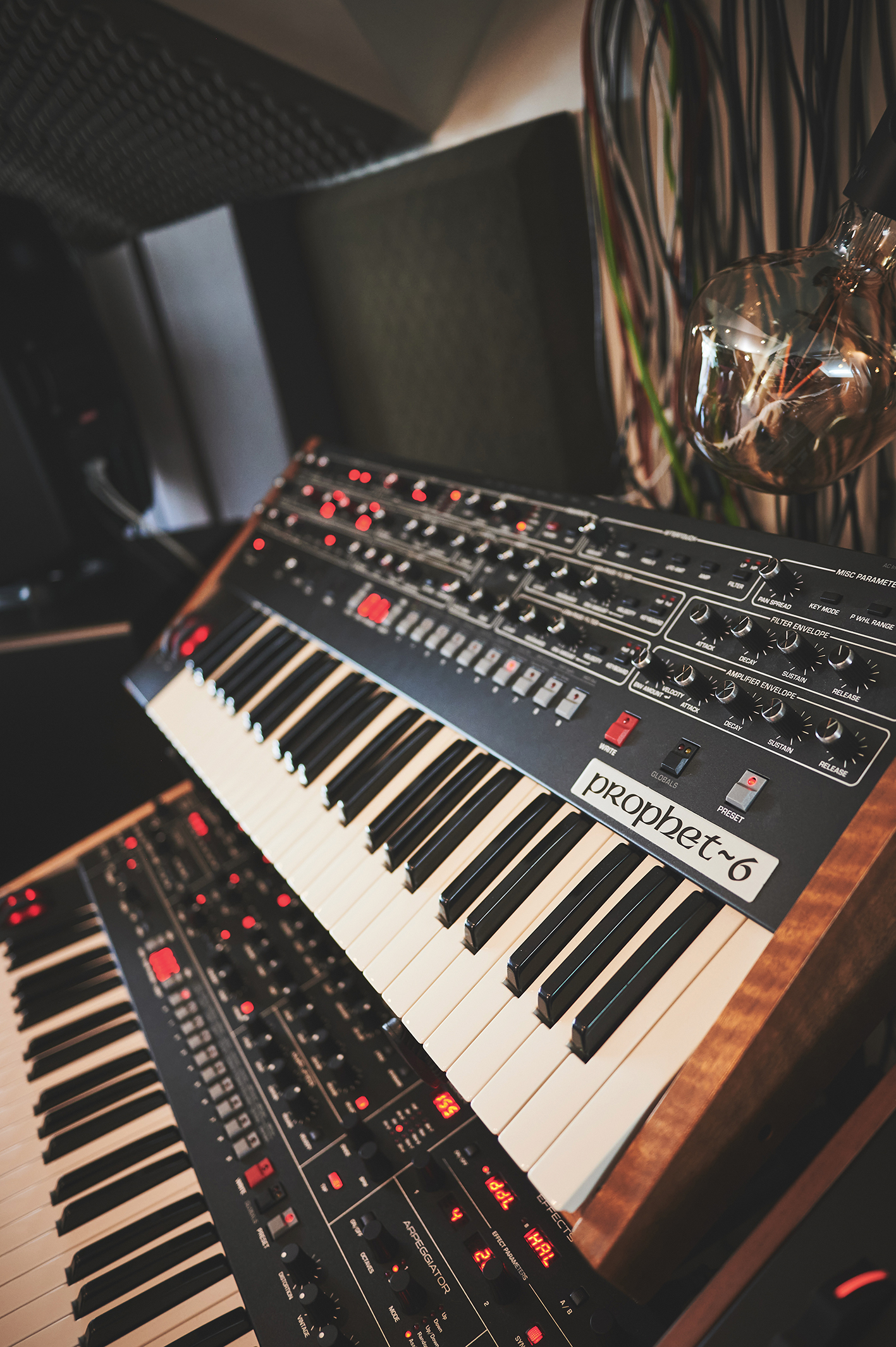
“The Trigon 6 again – another Dave Smith, RIP – has also become one of my favourites. It’s one of the newer synths they’ve come up with but it has a similar level of complexity. Again, it’s quite a simple synth, but one that you can jump in and build and you don’t get lost in the complexity. I hate patch-diving and hate menu-diving and shortcuts. The synths that are my favourite ones, there’s no digital display.
“There’s no menu-diving; everything’s there, you can just jam and play and you get this real tactile interaction with it. That’s what I look for, to be honest, with hardware synths. And that’s why I have lots of pedals. So I can have real tactile interaction with what I’m doing.
“The other synth I use a lot is the [Novation] Summit. I did a track called Spike that was predominantly the Summit. I use the Prophet or the Trigon-6 more if I want some emotive classic-analogue-sounding things. The Summit’s used a bit more on tracks like Vertebrae, which is more like a drum&bass track with gnarly sounds. If I want something more aggressive and digital-sounding, the Summit’s great. A lot of modulation potential.
“Then there’s the Juno-6. I love them. Again, that does even less but what it does, it does amazingly. There’s certain tracks – Four Tone Reflections was very predominantly the Juno-6. It has a very particular sound, and it’s really full. Unspoken Words, is another track I did with it, that was the Juno-6 running through the Space Echo. That piece of music is an ambient piece and very soft, but has a lot of the character from the combination of the Juno and the Space Echo.
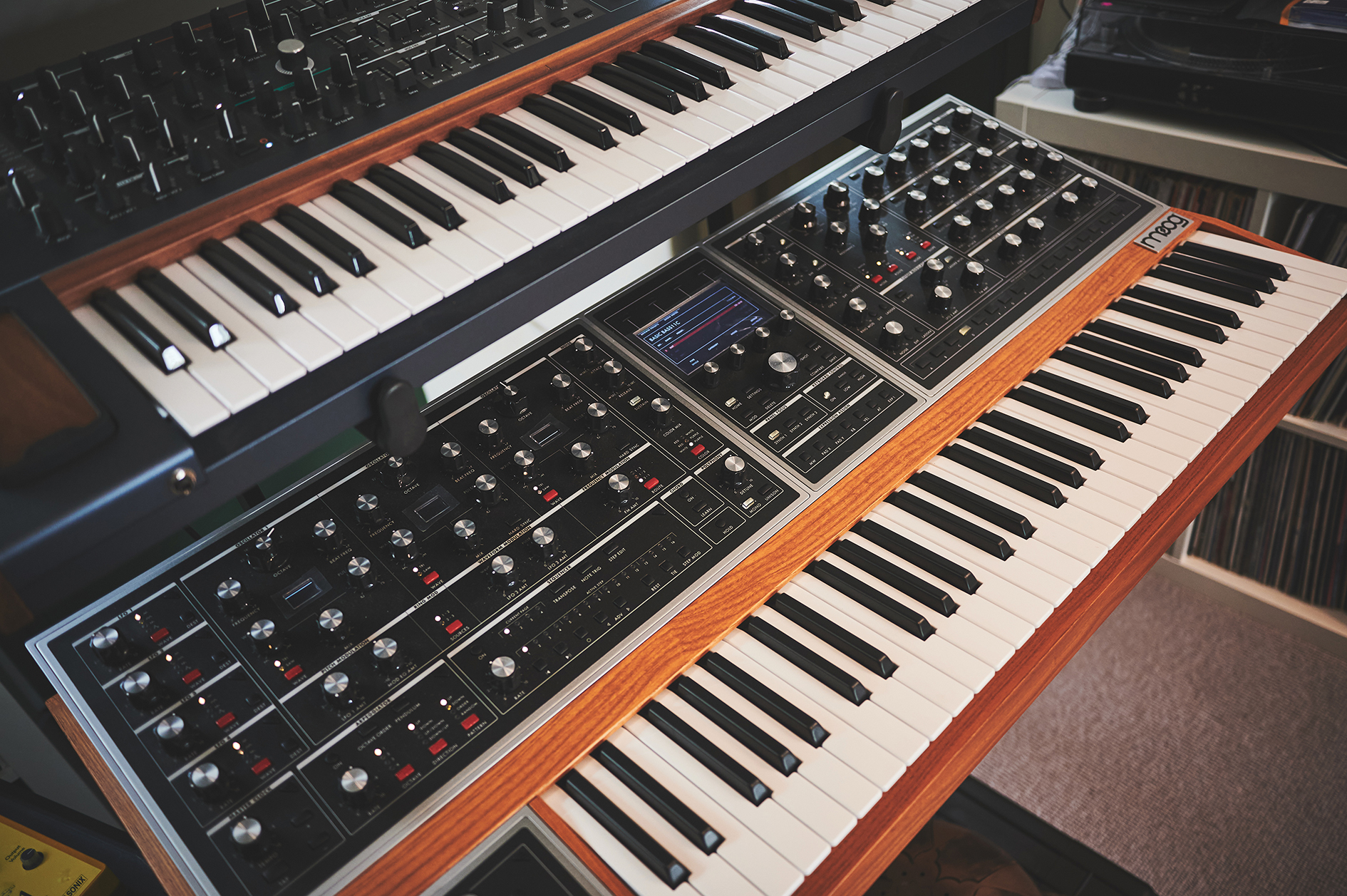
“I also have the beast that is the Moog One. That’s the most complex of my analogue synths, which I use a lot. It’s funny, although it’s the most complex, one of the things I use it for a lot is bass. If I want something to cut through, the Moogs often have these really rich, full sounds that cut through really nicely. So I often use it for sounds that are fairly simple.
“Big bass sounds, for example. It’s probably my most used bass synth, even though it’s actually capable of far more. Transcendental Tree Map was predominantly from the Moog One. Again, it has a lot of these little blip sounds that cut through the mix strongly – rich, analogue-sounding blip sounds. I find the Moog really good for that.
“The Arturia PolyBrute was predominantly used in Exotic Contents. The big, aggressive, distorted sounds in that are all from the PolyBrute. That’s got a sort of effects matrix in there, so you can have quite complex routings for unusual sound design.
“I also still have my first synth, which I still use loads. The Moog Taurus, which I use for bass stabs; a lot of my tracks, I’ve got these particular sort of intermittent, rich bass stabs. It does hardly anything, but what it does is amazing.“
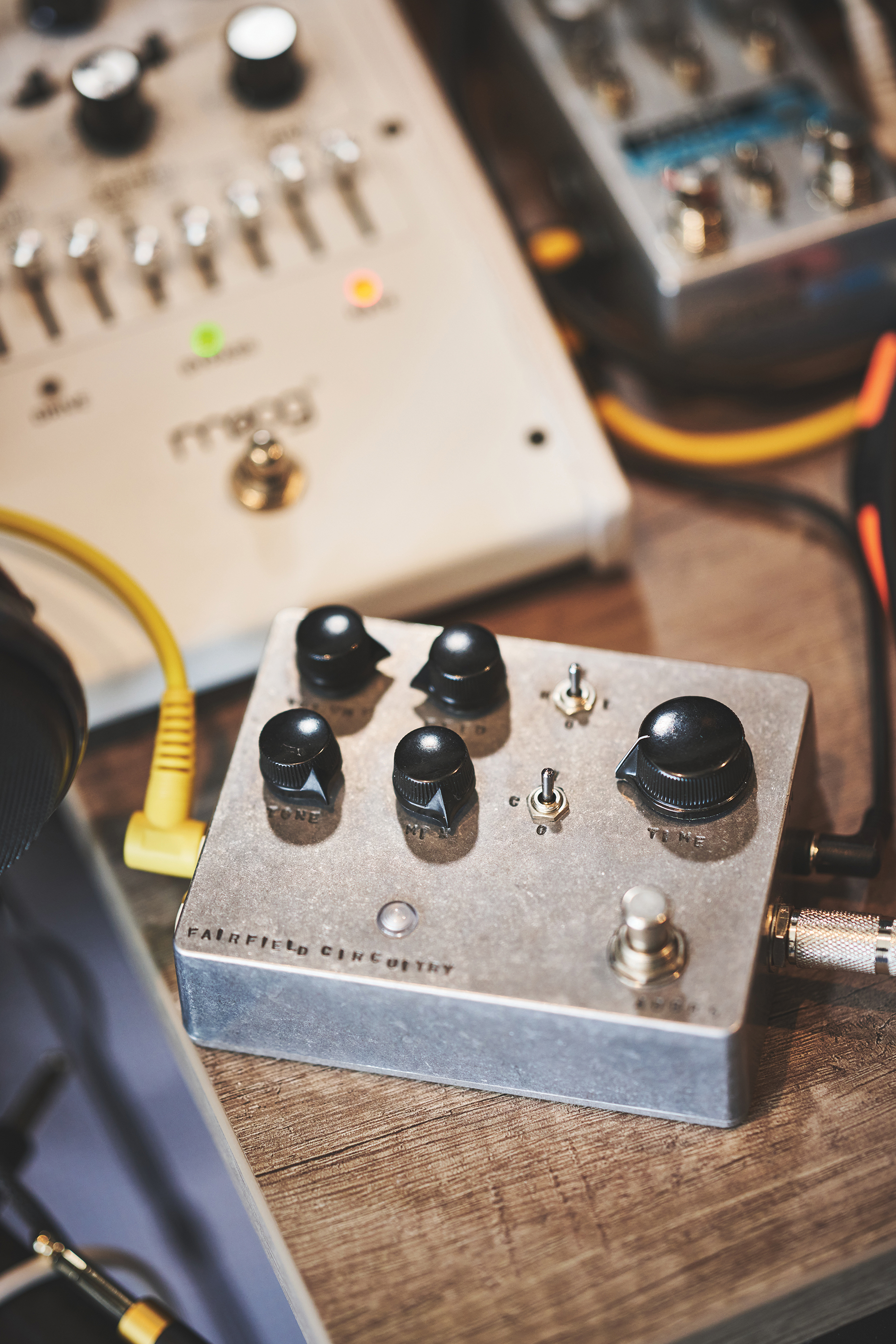
You like your effects pedals too...
“Pedals wise, the [WMD] Geiger Counter is a favourite. I love distortions, I use a lot of distortions. It’s a wavetable distortion, so it’s got tons and tons of different types of distortion, and there are some really brutal ones. But that’s really handy for crackle and fuzz. I often use it really quietly. Distortion-wise there’s also the [Industrialectric] RM-1N. That does a lot of screaming distortion, it’s got amazing feedback, I use that a lot. I often use this distortion from the Moogerfooger pedals. They’ve got a nice, fairly subtle saturation, which I run a lot of stuff through.
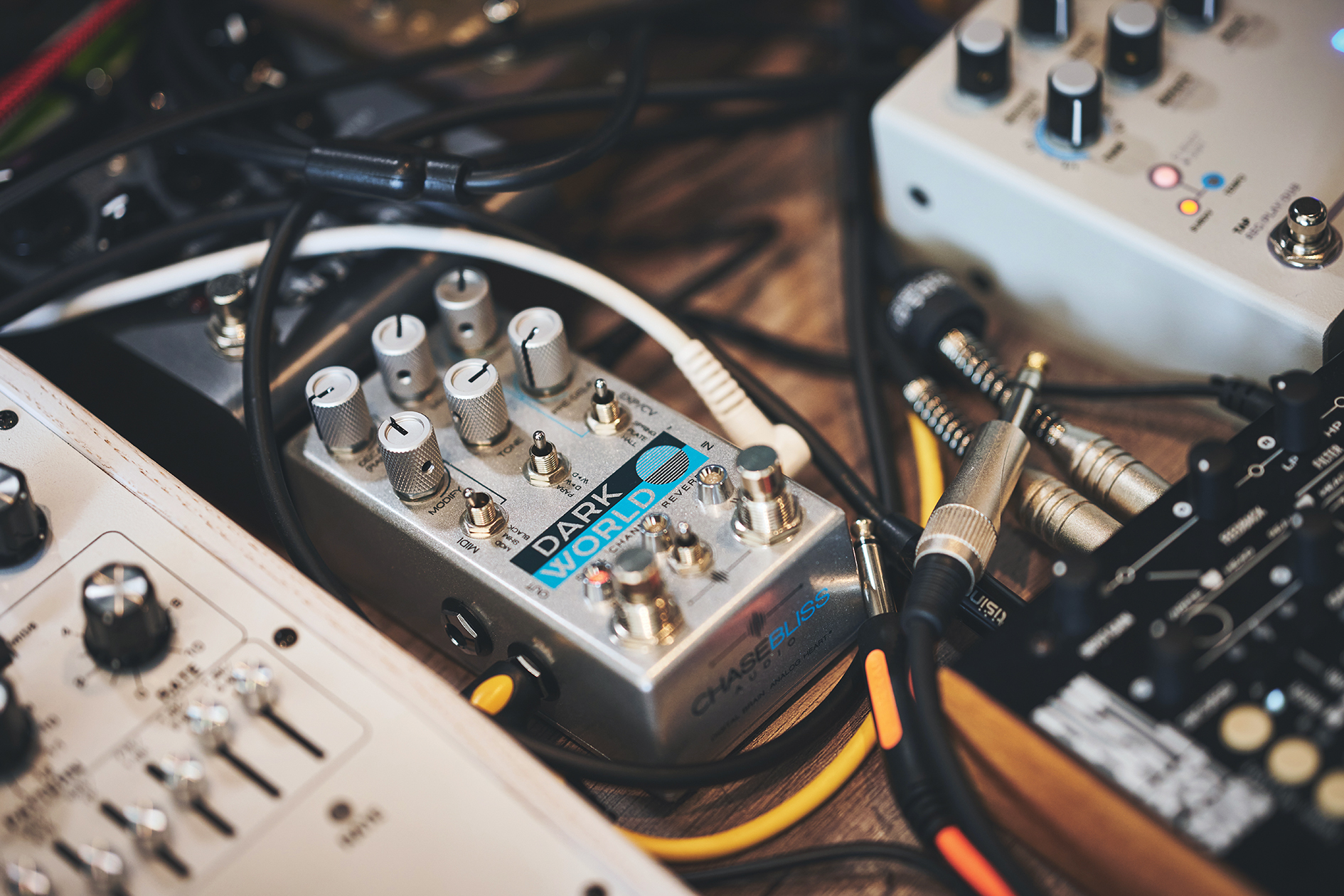
“Then there’s a couple of Chase Bliss, ones, which are really nice. The Dark World reverb is great for ethereal pads. Generation Loss is great for those lo-fi, fuzzy effects. I love the Fairfield Circuitry Meet Maude. It’s a delay, but actually I just love the saturation it has. It has a really rich sort of lo-fi saturation. My track Phi was one example where the lead is basically this.
“On top of that, there’s the more complex multi-effects pedals, like the Hologram Microcosm and Chroma Console. The Microcosm does a lot of staccato, glitchy, constantly varying editing things. It’s really good because you can you tap in the time as you have something playing. That’s how I’ll work a lot, I’ll be jamming on the synths and I might have a little loop I’ve recorded, or I might just have it on hold or have a pattern running on arpeggiator. And then I’ll tap the pedal in time with what you’re doing. Then you can change the interval. And then you can just jam with all these different types of multi effects, and it’ll spit out loads of variants.
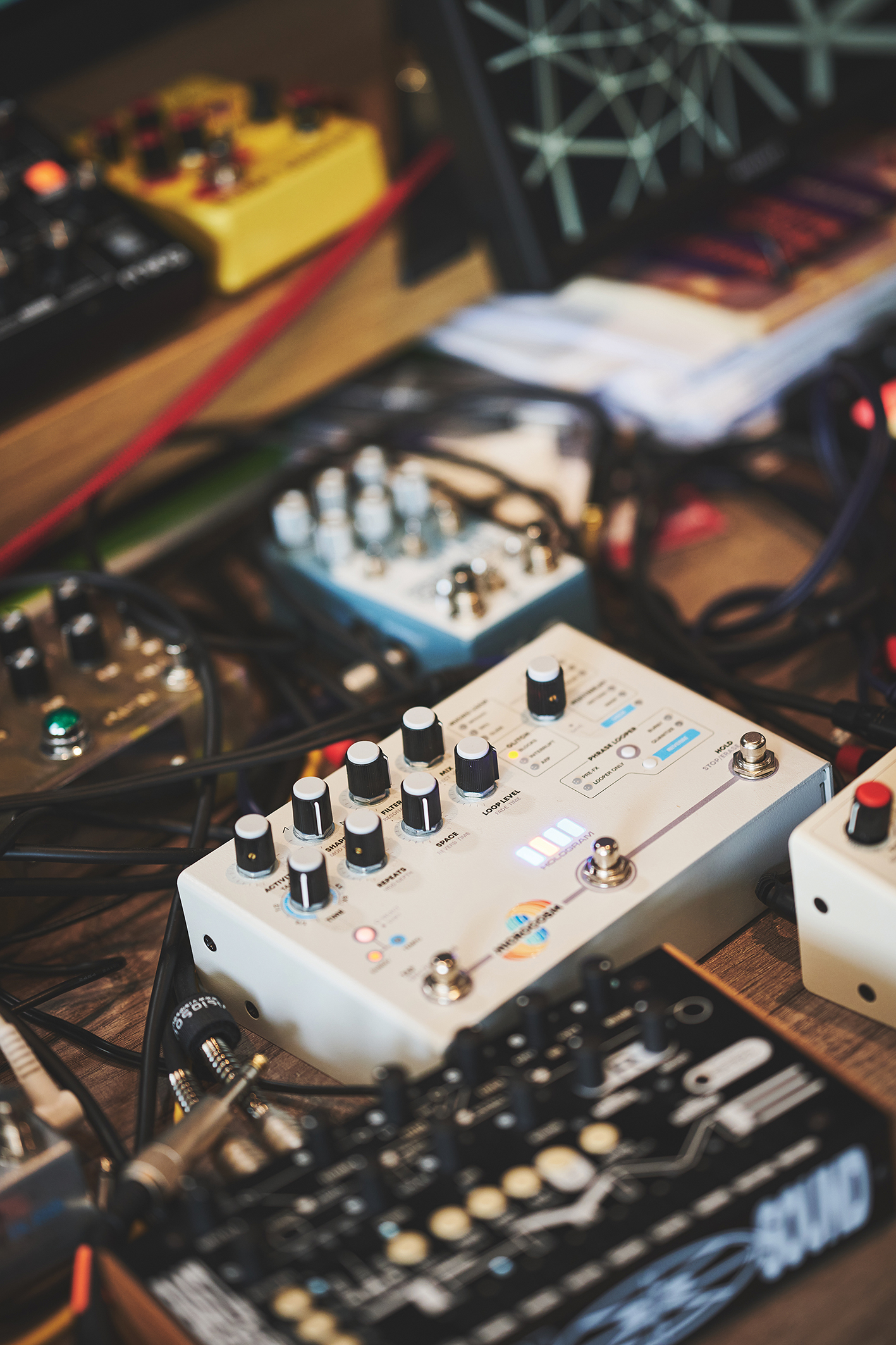
“I also love Bastl Thyme, that’s a mad one. It’s a sort of tape delay emulation that does a lot of insane glitches. The best thing about it is you can assign a modulator LFO to any of the parameters. You can have individual LFOs for every parameter and you can get wild modulations out of it. You can get a lot of generative stuff.
“That’s what I’m looking for with a lot of this stuff. ‘How can I set up a system that has a life of its own?’ I can play it and I can still play my chords and express what I want harmonically, because that’s where this emotion is, but then it takes on a life of its own and wanders around in these weird ways. I’m always looking for a system that’s partly generative and that’s partly performative.”
Max Cooper’s essential advice...
“Try to make it as much fun as possible. You have to be emotionally engaged with the process and what you’re doing. You have to be that obsessive, and to want to keep going and keep going – even if you make a shit piece of music – and then keep going again. The music industry is so competitive, and it’s so difficult to make any money off music, or to get anybody to listen to it. It’s just really difficult, the whole process and I feel like however far you go, it doesn’t stop. You have to keep on pushing and working hard – so it has to be enjoyable.
You’ve got to find something that you love. If you’re lucky, then some other people will like it as well
“I think that’s the primary thing. You’ve got to find something that you love. If you’re lucky, then some other people will like it as well. And if you’re unlucky, you’ll love something that no one else likes. A lot of people I know are like that, they make these amazing, amazing things, but it’s just not accessible. But if that’s your lot, then that’s sort of what you’ve got. The music industry is so fast changing and can be fickle. I think you’ve got to be doing it for your own reasons as opposed to trying to please everyone else. Because in the end it’s you that’s going to have to sit there for years and years working on it.”







